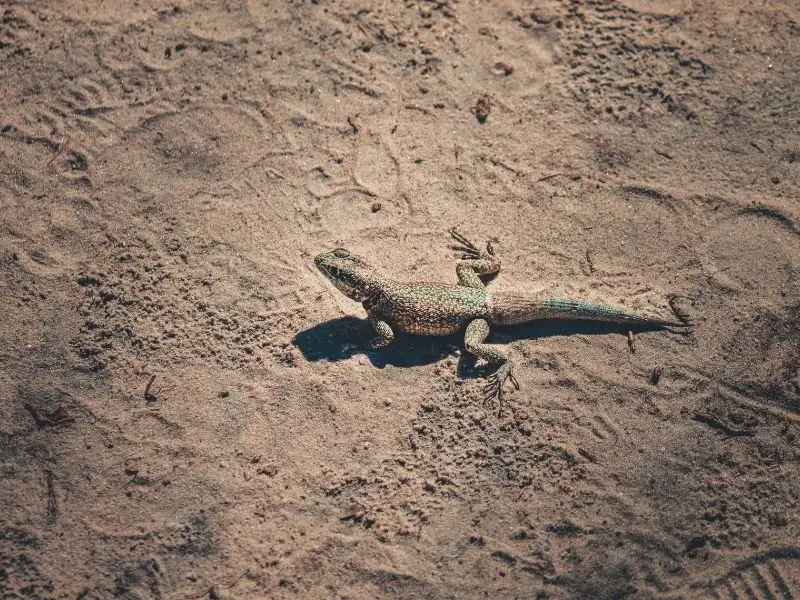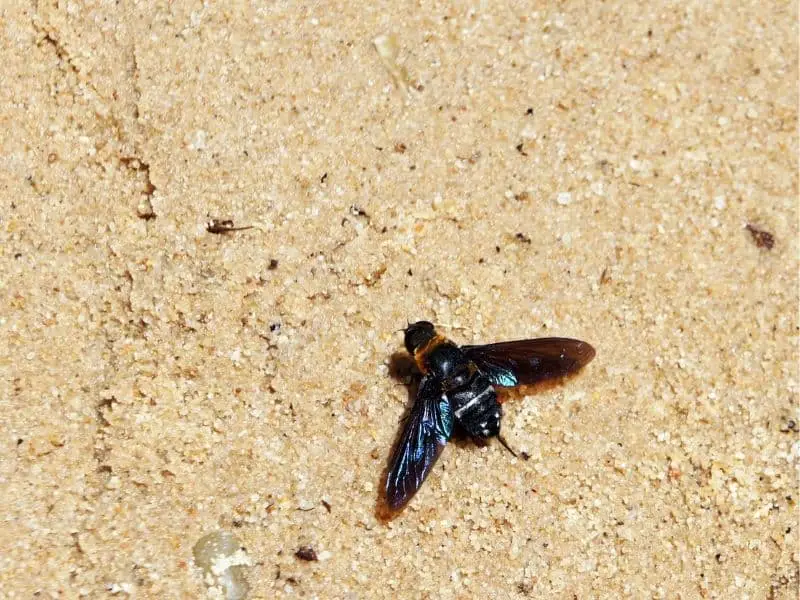Sandboxes are a great addition to any backyard. Sandboxes allow children to play with sand, and act as an area for them to create castles, mud pies, and anything else they can imagine. Sandboxes also provide the opportunity for parents to interact with their children in fun activities such as digging up “fossils” or “buried treasure.” But, sandboxes can also attract insects and animals. Insects can bite or sting and animals can leave behind dangerous bacteria. You can repel these creatures, but you must first know what animals and insects are likely to end up in your sandbox.
Some insects commonly found in sandboxes include: spiders, beetles, earwigs, centipedes, ants, mosquitoes, fleas, wasps, bees, flies, silverfish, and termites. Animals that are attracted to sandboxes include: cats, racoons, dogs, snakes, lizards, and rodents.
Although there are lots of different animals and insects that are attracted to sandboxes, keeping them out may be simpler than you think. In this article we’ll share with you several tips and tricks for how to keep bugs and animals away from your child’s sandbox.
Insects and Sandboxes
While sandboxes themselves can attract insects, it’s often the things that kids bring into the sandbox or improper care that makes the area a haven for insects. For example, certain types of insects will be attracted to the smell of food that children bring in the sandbox, like potato chips or other snacks. Sandboxes can also be a popular place for insects to lay their eggs or to seek shelter from predators.
Luckily, you can keep insects out of your sandbox by following these steps:
1. Keep the Sand Clean
Bacteria and other potentially dangerous substances can grow in dust that is left over in the box. Insects often lay eggs here because of this buildup. Washing the sand regularly will prevent this.
You can also clean the sand with a mixture of one part water and one part bleach (OR vinegar). Put the mixture of your choice into a spray bottle and then spray down the top layer of sand to disinfect it. Then mix the sand up with a rake and spray again. Repeat 3 to 5 times then let dry before playtime.
2. Keep it Dry
Sandboxes are often dark and damp. Spiders like these conditions. Insects can lay their eggs here, so you should make sure to dry it out after washing as mentioned above. You may also want to store toys in other areas of your house during this process to avoid attracting insects and other animals.
3. Avoid Keeping Attractive Plants Around

Sandboxes can be a hotspot for ants and other insects, especially if there are nearby trees or shrubs that they can use as a bridge to cross the sandbox. One way you can keep them out is by getting rid of any greenery around your sandboxes. Some people even surround their entire sandbox with tile or paving stones so there’s nothing to attract insects around the sandbox.
However, there are exceptions to this rule. You can plant insect-repelling plants near the sandbox to help keep insects away. These include:
- Citronella
- Basil
- Mint
- Rosemary
- Lavender
4. Use Kid-Safe Insect Repellent
Use insect repellents when children are playing in the sandbox. There are products on the market that will discourage insects from entering the sandbox. Make sure that these products are applied correctly and that you’re aware of all the ingredients in the product.
5. Keep Food Out
Sandboxes can sometimes retain the odor or residue of foods eaten in the sandbox, like potato chips or other snacks. Certain insects will be drawn to the sandbox because they think it is a good place for a food source. Those insects can then attract other insects or animals that are looking to eat the insects that are eating the food! That’s the circle of life, I suppose, but you don’t really want it happening in your sandbox.
So, make a no-food rule for the sandbox to help keep your sandbox critter-free.
6. Sprinkle Cinnamon In The Sand
Cinnamon is a natural insect repellent. Sprinkle cinnamon in your sandbox as a safe way of keeping out unwanted bugs while allowing children to play without fear! You don’t need a lot of cinnamon, and it’s a good idea to mix it into the sand with a rake or shovel for best results.
Animals and Sandboxes

Animals can also get into sandboxes and pose a threat to the health of any children playing there. Unlike insects, where the threat comes from stinging or biting, animals can leave behind bacteria that can cause children to become ill. The most common animals that get into sandboxes are cats, dogs, racoons, rats, and mice. Snakes can also venture into sandboxes looking for rodents to eat, but this is more common in rural areas or for sandboxes that don’t see regular use.
If you’re worried about animals in your sandboxes, here are a few things you can do to keep them out:
1. Use a Cover
You may want to consider installing a cover on the sandbox to keep animals out. This is the best way to keep larger animals out of the sandbox. Cats, racoons, and dogs will no longer be able to get into the sand, which means they won’t be able to leave behind any feces or urine that could carry bacteria.
Sandbox covers can also help keep certain insects out of the sand. Here’s a great sandbox with a cover available on Amazon.
- ★ NEW Design RETRACTABLE ROOF- UPGRADE the roof...
- ★ Easy to Clean & Detachable Canopy- It is easy to...
- ★ STURDY CONSTRUCTION- Dedicated T-shaped hinge...
- ★ Bottomless design- Facilitates drainage,...
2. Use Natural Repellents
If you don’t have a sandbox cover, you can also use natural repellents to keep cats and other animals out of the sandbox. It’s best to use animal-specific repellents because what works on some animals may not work on others. However, there are some pretty good repellents out there that work for lots of different animals. My personal favorite is Natural Armor Animal and Rodent Repellent Spray. This stuff can help keep out cats, rodents, racoons, and a whole host of other animals.
However, if you’re having issues with a particular animal, its best to use a more specific repellent. We’ll cover a few options below.
Natural Cat Repellents
There are several natural cat repellents that you can use to keep these animals out of your sandboxes. Here are a few options and how they work.
1) Garlic: Cats may not like the smell of garlic, so it may be the cheapest option for you to try. You can also get ready-made garlic tablets or flakes in most grocery stores. All you need to do is sprinkle them on top of the sand and then cover them with water.
2) Peppermint Oil: Peppermint oil has a strong odor that cats will avoid, but it’s not harmful to animals so you will save money by using it in place of other stronger animal repellents. Just add three or four drops for every one cup of water and pour it around the sandbox.
Natural Dog Repellents
The best way to keep dogs out of a sandbox (other than a cover) is to train them not to go into it. Unlike cats, dogs can be trained to stay out of the sandbox. This takes a little bit of work, but it’s the best option for dogs if you don’t want to use a cover.
Natural Raccoon Repellents
Racoons will head for your sandbox if there’s anything tasty left over in there. This means that one of the best ways to keep them out is to keep your children from eating food in the sandbox. Having drinking water there is okay, but drinking any other kind of liquid could attract racoons and other pests if spilled. This also means keeping the area around the sandbox clean.
Replace the Sand When Necessary
Even if you do use a cover and take other precautions to keep animals out, it’s important to replace the sand regularly. No matter what you do, your sandbox will get dirty. And dirty sandboxes attract animals and insects. This is why it’s important to replace the sand on occasion.
If you use a cover and your sandbox doesn’t see a whole lot of use, you can replace the sand once every two years.
If you don’t have a cover and your sandbox sees regular use, you should look to replace the sand once a year on average.
In Conclusion
Don’t let insects or animals spoil your sandbox fun. Sandboxes are a great place for kids to play and they can be even more fun when you have a game plan to keep out the bad guys. Sandbox covers and repellents can help, but it’s up to you to keep things clean on the inside and outside of the sandbox.
Keeping a sandbox clean is important for the health and safety of children and it helps to keep insects and animals out. Sandboxes are a lot of fun for kids, and cleaning them is one of the best times to work on getting your children to take responsibility for their actions.
All in all, the best way to keep your sandbox pest-free is by keeping food and drinks away from it and using a cover when it’s not in use. And remember: always check your sandbox for critters before you let your kids play in it!


